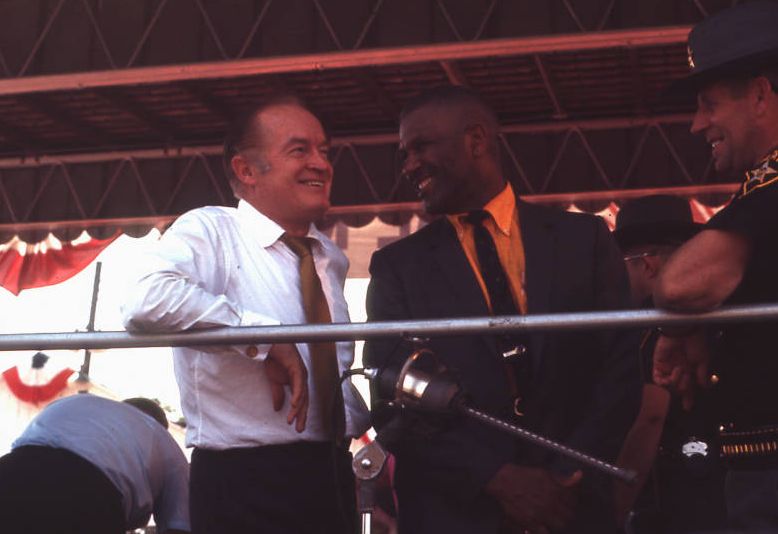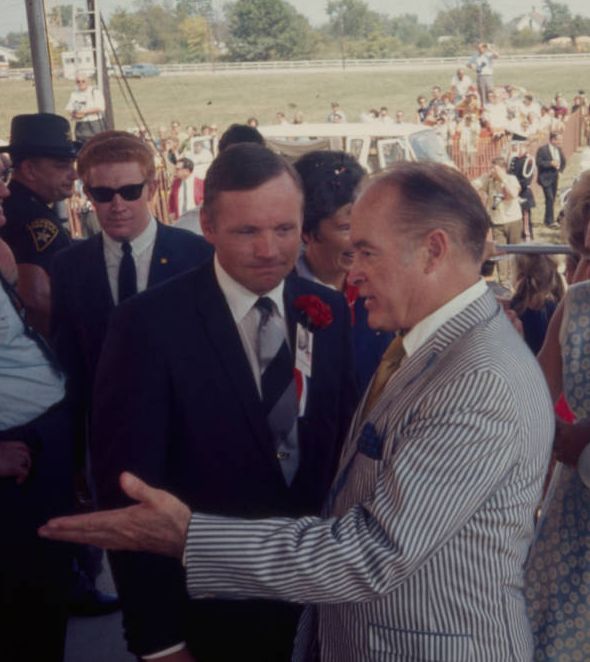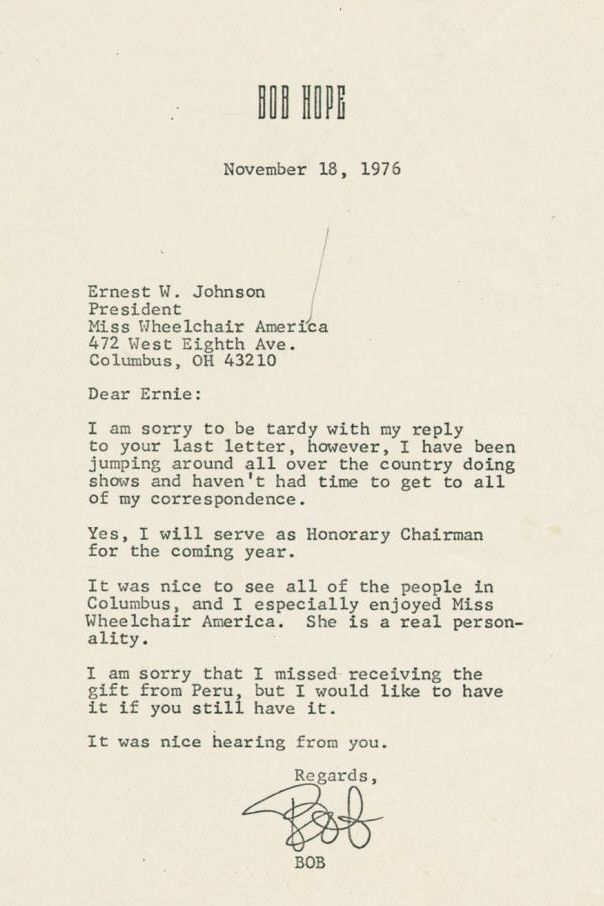“Born in England, Raised in Cleveland and Schooled in Vaudeville”

Leslie Townes Hope was born on May 29, 1903, in the London suburb of Eltham, England, to his mother Avis and his father William, a stonemason. These days, Leslie (who later changed his name to Lester) is better known to millions as the world-famous entertainer, Bob Hope.

When Hope was not yet five years old, his family immigrated to the United States in hopes of economic stability and a better life. They settled in Cleveland, where Hope would spend his youth. He was an entertainer from early on, performing for money on the boardwalk in Cleveland and on the trolley to nearby Luna Park, and competing in local talent competitions. By his early 20s Hope had become a star in the Vaudeville circuit across the United States, and he continued performing, primarily in Broadway plays, into the early 1930s.
At that point, Hope returned to Hollywood to begin his work in movies, though most of his early films failed to attract much attention from moviegoers. His breakout hit was inThe Big Broadcast of 1938, which was quickly followed by more successes including the Road To… series of films, national radio programs and various television appearances. This Sunday, April 9th, is the anniversary of his first appearance on national television, back in 1950, on NBC’s Star Spangled Revue, a live variety show broadcast from New York City.
During his long career, Hope was also known as a major supporter of United States soldiers. He traveled overseas more than sixty times to entertain the troops in conjunction with the United Service Organizations (USO), at times in harm’s way, performing for troops during World War II, the Korean War, the Vietnam War, and the Persian Gulf War. He was also well known for his love of sports, including a lifelong infatuation with golf, a brief stint as a boxer, and partial ownership of the Cleveland Indians and the Los Angeles Rams.

Throughout his life, Hope maintained a connection to Ohio. Some of the ties you can find on Ohio Memory include his USO work, his service with the Miss Wheelchair America organization (seen at right), his participation in the homecoming festivities for Neil Armstrong following his historic walk on the moon, and his ongoing support of the Boys’ Industrial School outside of Lancaster.
This last connection is perhaps the most surprising. Just before his 15th birthday, Hope (then going by Lester) was admitted to this institution for unspecified “delinquent behavior” after dropping out of his sophomore year of high school. The Boys’ Industrial School–BIS for short–was a state reformatory offering guardianship for troubled boys, and Hope spent over a year and a half there between 1918 and 1921. Although he was never talkative about his time at the site, Hope donated sizable sums of money to BIS as an adult, claiming that his time there caused him to lead a better and more honorable life.
This is only a brief glimpse at the long and varied life of Bob Hope–a great and detailed retrospective is available from the Library of Congress, if you’d like to start learning more. Hope died on July 27, 2003, just past his 100th birthday, but remains an unforgettable part of Ohio and American history today.
Thanks to Lily Birkhimer, Digital Projects Coordinator at the Ohio History Connection, for this week’s post!



Leave a Reply
You must be logged in to post a comment.